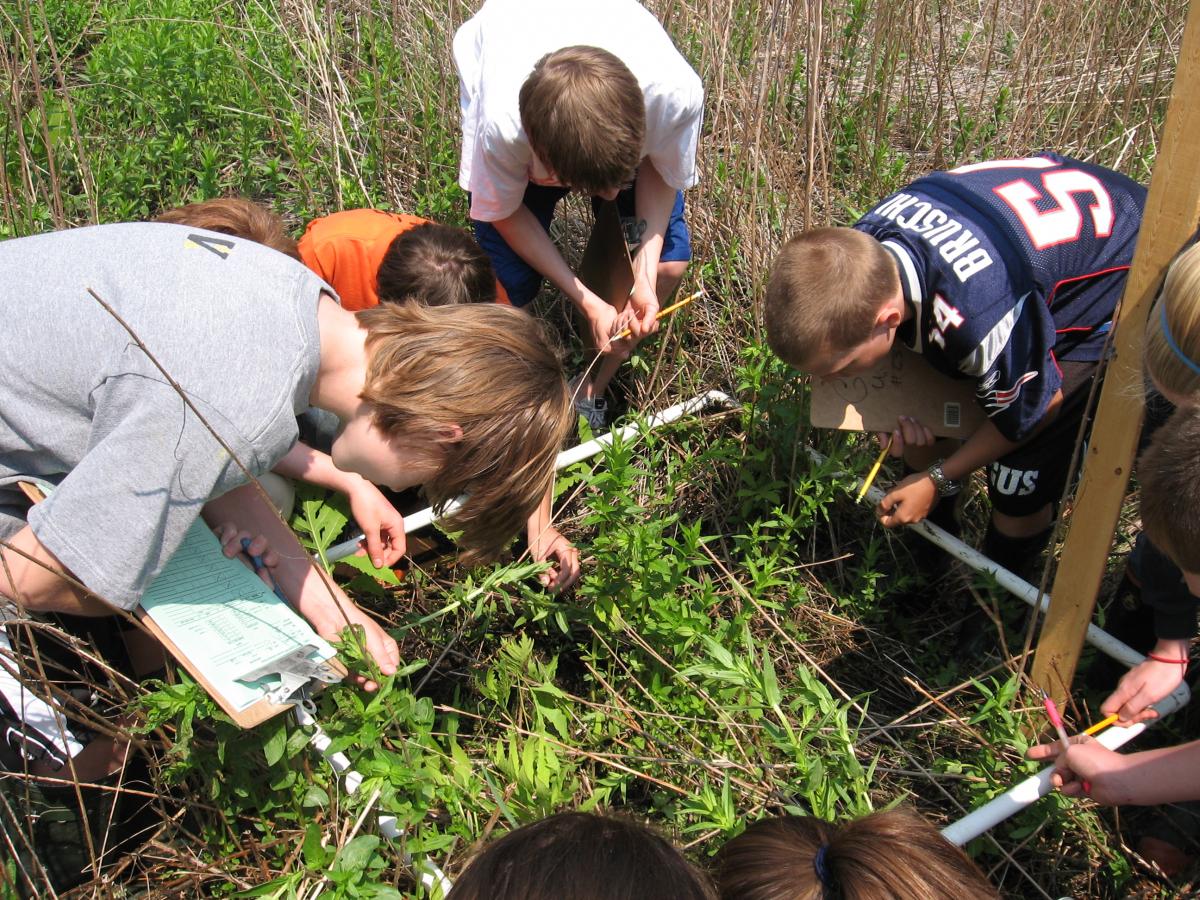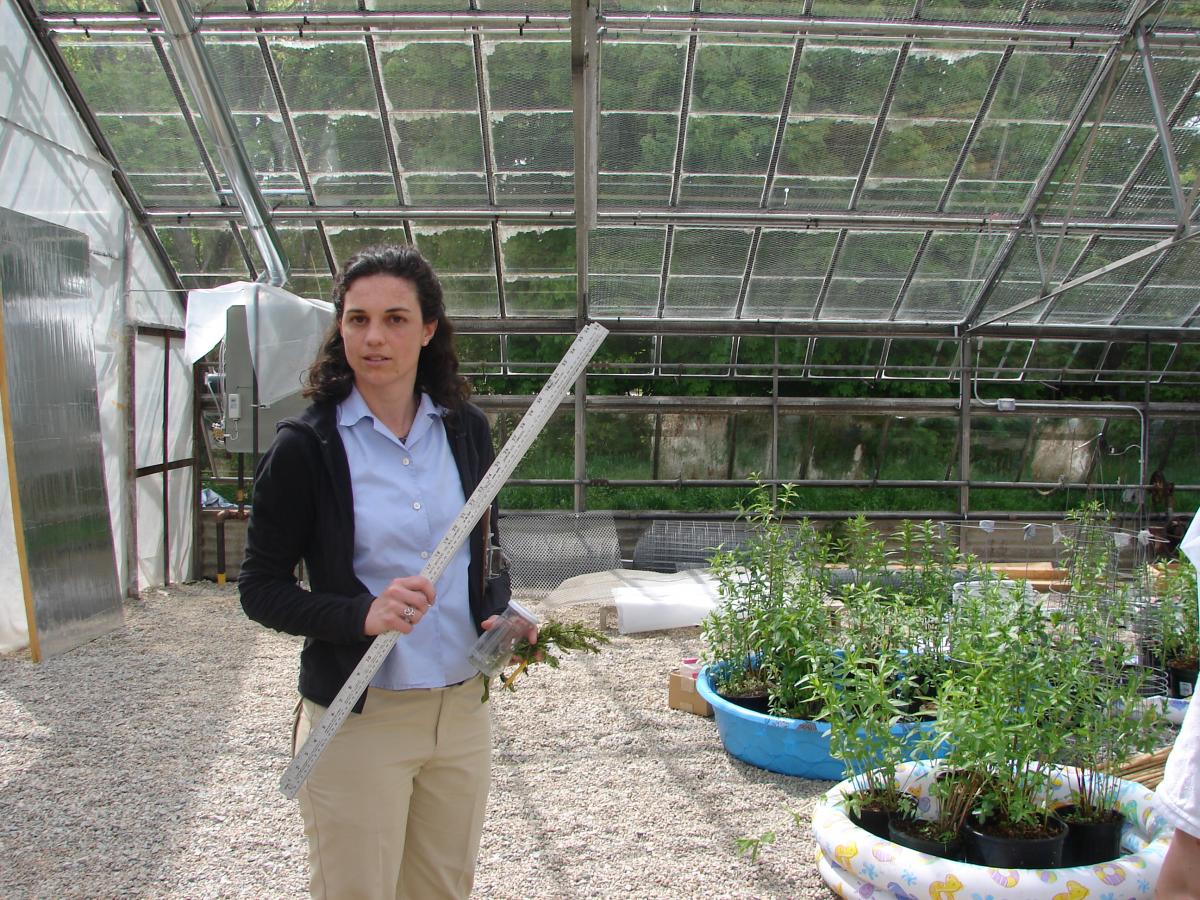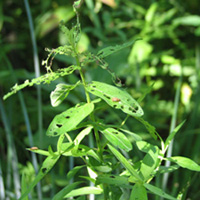Lessoning Loosestrife
What is Lessoning Loosestrife?
Lessoning Loosestrife is curriculum designed for elementary - high school level students to help teach about wetlands, invasive species, and about using biocontrol beetles as a tool for controlling a wetland invader, purple loosestrife. Our aim is to not only teach lessons about loosestrife and key ecological concepts, but also to lessen the impact of this invader, while developing and reinforcing a stewardship ethic in students.
Who might find this curriculum useful?
These lessons are useful not only to those participating in or planning to begin biocontrol treatments of purple loosestrife infestations, but also to teachers who would like some simple, effective hands-on, inquiry based activities for exploring wetlands -- introducing the topic of invasive species and helping students develop an attitude of stewardship and community service in their classrooms. The curriculum is also useful to informal educators who may work with other audiences such as camps, after-school groups or home-school students.
The development of this standards-based curriculum was paid for by 5 Star Restoration Grant from the National Fish and Wildlife Foundation. It was developed by Liz Duff, Education Coordinator of Mass Audubon's Salt Marsh Science Project, in cooperation with Beth Suedmeyer, Restoration Planner for the Massachusetts Wetland Restoration Program.
Essential Understandings of Lessoning Loosestrife
The lessons contain 6 essential understandings including:
A. Wetlands have important functions that humans protect.
Wetland Functions and Conservation Commissions
Folder A Contents (PDF 426K)
Where Does a Wetland Begin (DOC 1.2M)
Wetland Observations (DOC 1.2M)
Wetland Protection Act (DOC 1.2M)
Conservation Commission Questions (DOC 1.2M
B. Invasive species are a threat to some of the wetland functions.
Performance Task (Assessment Project)
Folder B Contents (PDF 1.4M)
Performance Task (DOC 1.2M)
Loosestrife Impact (PPT 643K) Loosestrife Impact (DOC 1.4M)
Loosestrife Impact (DOC 1.4M)
C. Humans are working to protect and restore wetlands.
PowerPoint Intros
Folder C Contents (PDF 7.1M)
Purple Loosestrife Biocontrol Intro (PPT 1.9M)
Loosestrife Life Cycle (PPT 929K)
D. Raising and releasing beetles is a way that students and teachers can contribute to wetland health.
Beetle Rearing Materials
Folder D Contents (PDF 3.4M)
Beetle Rearing Checklists and Instructions (DOC 1.3M) Beetle Rearing Guide (DOC 2.5M)
Beetle Rearing Guide (DOC 2.5M)
Galerucella Beetle Life Cycle (DOC 255K)
How Many Beetles (DOC 3.4M)
Raising Beetles (PPT 715K)
E. Monitoring wetlands is a way to check how successful restoration efforts have been.
Beetle Monitoring
Folder E Contents (PDF 3.5M)
Materials List and Checklists (DOC 1.2M)
Percent Cover Categories (DOC 4.5M)
Plant Identification Activity (DOC 1.2M)
PL Monitoring Fall Student (DOC 283K)
Data Analysis (DOC 2.3M)
Data Example Walpole 2000-2006 (XLS 66K)
Leaf Damage (PPT 625K)
PL Monitoring Spring Student (DOC 630K)
WRP Protocol (PDF 1.3M)
F. Mapping invasive species and beetle damage is a way to assess how widespread the problem is, and to begin to plan how to best approach the problem.
Mapping Beetles
Folder F Contents (PDF 180K)
Mapping Instructions (DOC 1.2M)
Loosestrife Map Form (DOC 1.3M)
In addition to these essential understandings, the curriculum includes useful background information such as vocabulary lists, connections to the frameworks, and safety tips.
G. Background Materials. (Safety checklists, Massachusetts science frameworks connections, etc.)
Folder G Contents (PDF 425K)
Frameworks Connections (DOC 1.2M)
Materials Cost List (DOC 62K)
Research on Impact of Purple Loosestrife (PDF 134K)
Safety Checklist and Chaperone Letter (DOC 1.2M)
Suggested Resources (DOC 1.3M)
Vocabulary (DOC 1.2M)
